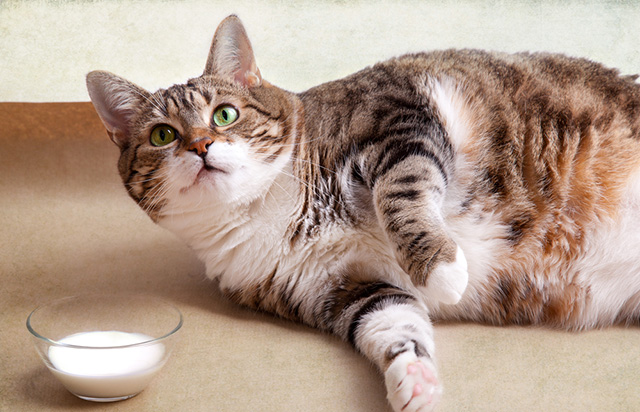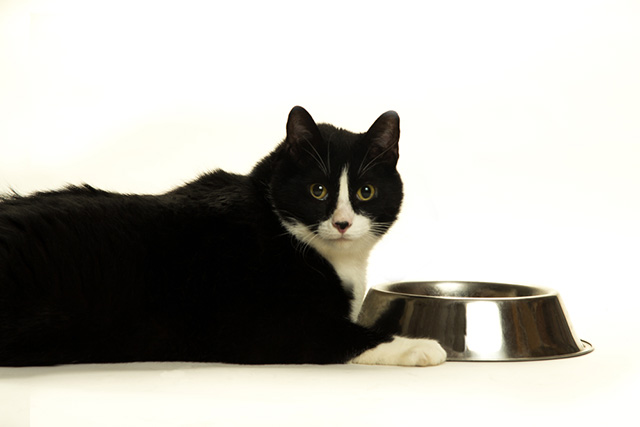If your cat no longer jumps up like he or she once did there may be a good reason – osteoarthritis.
A chronic, degenerative joint disease that makes movement difficult and painful, osteoarthritis mainly strikes pets in their middle and senior years. However, younger cats can also be affected.
In fact, studies show that approximately 20% of dogs have the condition, and, whilst cats are less likely to show obvious signs of osteoarthritis, they also suffer from it in large numbers. In one study over a period of 12 years, 95% of cats showed x-ray evidence of joint degeneration, suggesting that the number of affected cats appears to be higher than commonly accepted.
It can be heartbreaking to see your once lively, active cat begin to limp, or notice obvious stiffness when moving around. Signs can often be more subtle and the owner only notices a scruffy coat. There is no cure for osteoarthritis. However, if it is treated promptly, there is a great deal that you and your veterinary surgeon can do to decrease your pet’s discomfort and increase his or her mobility.
What are the early warning signs of osteoarthritis in cats?
- Difficulty in walking, climbing stairs, jumping up or getting in and out of the litter box
- An overall decrease in activity, especially play
- Resting more than usual
- Slowness in getting up from a lying position
- Failing to groom themselves resulting in a scruffy and even matted coat, especially on the back region
- eating less, as cats appetite is greatly affected by pain resulting in loss of weight
- Slow or stiff movements especially after waking up orlying down which improves with movement
- Stiffness which is worse in cold weather
- Beginning to limp
- A swollen joint or joints that are warm to the touch and have a limited or painful range of movement
- Licking or biting at a joint
- Personality change – your pet no longer likes to be touched or played with and may even bite when touched
If you notice any of the signs above, don’t just think that your cat is “slowing down with age”. Take him or her to see your vet! The sooner osteoarthritis is first diagnosed and treated, the better your catÕs quality of life will be.
What causes osteoarthritis in cats?
There are many causes of Feline Osteoarthritis, but practically all can be grouped into two main categories:
Abnormal stress on normal joints
- An injury that damages a joint.
- “Wear and tear”: joints are subjected to repeated loads or stress.
- Obesity: an excessive load is put on joints.
Normal stress on abnormal joints
- Developmental defects that alter the shape or stability of a joint.
- Poor limb configuration: bow legs or knock knees can cause an uneven load on a joint.
- Genetic predisposition: some breeds may be more prone to osteoarthritis than others.
Hip dysplasia: Normal stresses on a dysplastic (malformed) joint will lead to arthritis. Whatever the specific cause, stress on a joint can begin a destructive cycle of inflammation of the joint area and damage to the cartilage that leads to pain for your pet.

What’s the outlook for a cat with osteoarthritis?
Osteoarthritis may progress very slowly (over several years) or very quickly (you might notice a major change in just a few weeks or months). It all depends on your catÕs age, his or her activity level, the joints involved, and the underlying cause.
Some cat’s pain and loss of mobility can be kept to a minimum for long periods of time with a simple regimen of weight control, moderate, regular exercise and the occasional use of anti-inflammatory drugs if flare-ups occur.
For others, severe damage to the joints may occur rapidly and require long-term medication and other therapy. In either case, your veterinary surgeon can determine the best course of treatment for your pet’s particular condition.
There is no reason why, with your loving attention and committed care, as well as your veterinary surgeon’s guidance, an osteoarthritic cat cannot have a happy, healthy and comfortable life for many years to come.

Further information on treating osteoarthritis can be found here
